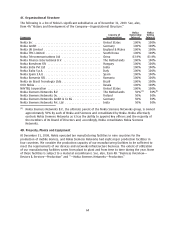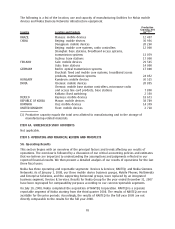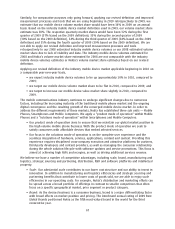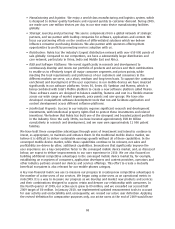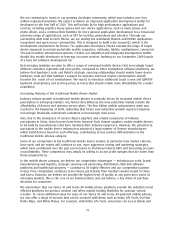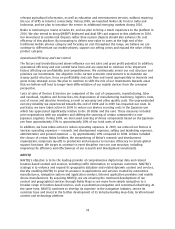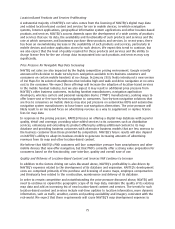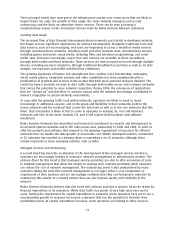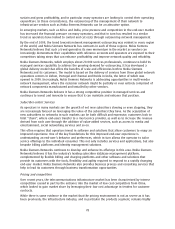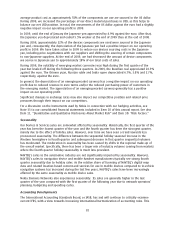Nokia 2009 Annual Report Download - page 74
Download and view the complete annual report
Please find page 74 of the 2009 Nokia annual report below. You can navigate through the pages in the report by either clicking on the pages listed below, or by using the keyword search tool below to find specific information within the annual report.continues to provide a wide range of mobile phones with differentiated hardware features as well as
software capabilities to meet the needs of consumers globally; from midrange devices for consumers
that want to use Internet services to ultra lowend devices for firsttime mobile phone users in
emerging markets.
In the mobile phone category, we expect affordable touch screen and QWERTY keyboards to grow in
popularity, and we expect the adoption of services to increase. In order to ensure the longerterm
competitiveness of our mobile phones portfolio, we are investing in hardware and usability
innovations specifically for this category. In 2010, we plan to introduce touch displays, QWERTY
keyboards and dual SIM cards in the mobile phone category.
Competitive Ecosystems are Developing in the Converged Device Market
In the market for converged mobile devices, new ecosystems are developing around major software
platforms, including Symbian, MeeGo, Android and Apple’s iPhone. In addition, other industry players,
including handset vendors such as Samsung, Palm, RIM, as well as operators such as Vodafone and
China Mobile, have created their own proprietary marketplaces for services and applications. This
could potentially lead to a fragmentation of developer efforts and commoditization of device
hardware.
Ecosystems are also developing as many industry players begin to believe that a completely closed
and vertically integrated strategy may result in capability gaps due to the pace of innovation. Thus,
the ability to partner in mutually beneficial ways is becoming increasingly important. For example,
we are partnering with Microsoft to target enterprise customers, and we are also planning to offer
Microsoft’s Office suite on our Symbianbased smartphones. In the first case, we and Microsoft
collaborate to create an enterpriseclass solution, and Microsoft provides industryleading enterprise
sales capabilities. In the second case, we provide Microsoft with distribution on the industry’s most
pervasive smartphone platform, and Microsoft provides us with industryleading enterprise
productivity applications.
In order to maintain our market leadership position in both mobile phones and converged mobile
devices, we are striving to differentiate ourselves as an attractive partner for application developers,
content providers and other collaborative partners seeking access to mobile consumers. Nokia is
taking an open approach towards creating a large, sustainable ecosystem intended to drive our
mutual success. We are leveraging global technology platforms and partnerships in order to offer
devices and services that are designed and priced appropriately for the preferences of consumers in
different markets globally. We are focused on building a large and engaged community of active users
and developers, as well as improving the application development tools we offer to our developer
community.
Building on the functionalities of converged mobile devices and enhancing their value for consumers,
we continue to develop Ovi, our Internet services brand, under which we continue to integrate our
services to simplify the user experience and differentiate ourselves from competitors. Ovi is a global
platform, which we believe gives us the benefits of scale. Simultaneously, our Ovi platform is
designed to support localized services offerings; for example, local content and local operator billing
integration. Combined with our distribution capabilities, we believe this is a significant competitive
differentiator in a number of markets globally. Ovi Store had over one million downloads a day in
February 2010, and Nokia expects continued strong growth during 2010.
Our community of partners is growing — including developers, operators, content companies and
other industry players — with strategic as well as financial objectives that are closely aligned.
Compared to our competitors, we believe that we generally provide more opportunities to share the
economic benefits from services and applications sales. For example, operators can integrate their
billing systems with our Ovi Store and then share the revenue from applications sales. In this way, we
are collaborating with operators and building ecosystems at a local level to support the delivery of
services.
72




